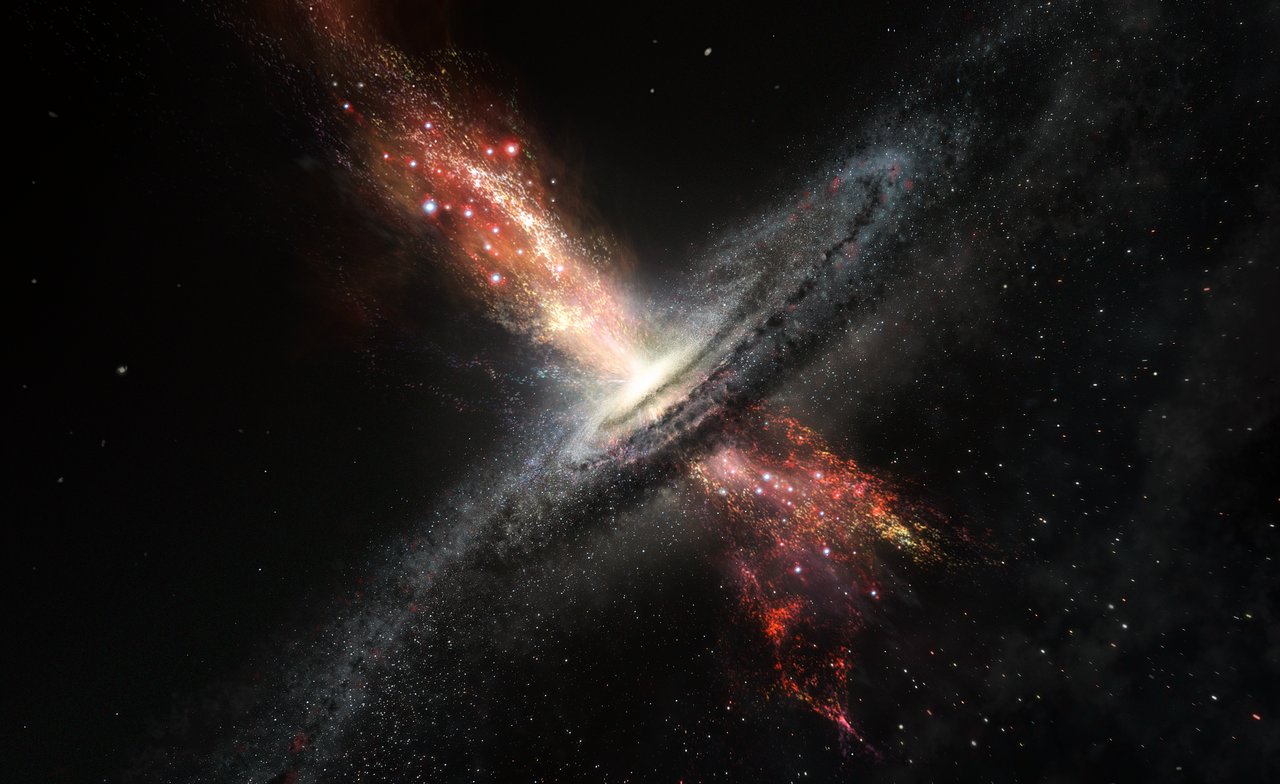Black holes can force huge clouds of gas to move away from galaxies and these gas clouds may, in turn, lead to new stars, according to new research,

Astronomers have studied the collision between two galaxies located about 600 million light-years from Earth. They were then able to see how the matter was swept out of a black hole in the middle of one of the galaxies.
The astronomers explain that when the black hole devours stars, other material is heated and surrounding gas is swept out of the galaxy with hot winds.
Supermassive black holes make up the very core of galaxies and material is routinely blasted out and in the midst of these powerful outflows, stars appears to be forming within.
“Astronomers have thought for a while that conditions within these outflows could be right for star formation, but no one has seen it actually happening as it’s a very difficult observation. Our results are exciting because they show unambiguously that stars are being created inside these outflows,”
– Team leader Roberto Maiolino, professor of experimental astrophysics at the University of Cambridge, UK.
Th stars are thought to be less than a few tens of millions of years old, and preliminary analysis suggests that they are hotter and brighter than stars formed in less extreme environments such as the galactic disc, nebula and molecular clouds in interstellar space called “stellar nurseries”.
The observations have been made ESO’s Very Large Telescope and been published in Nature. The telescope observations are the first confirmed observations of stars forming in this kind of extreme environment.
Reference:
Maiolino et al. Star formation in a galactic outflow Nature on 27 March 2017











![OpenAI. (2025). ChatGPT [Large language model]. https://chatgpt.com](https://www.illustratedcuriosity.com/files/media/55136/b1b0b614-5b72-486c-901d-ff244549d67a-350x260.webp)
![OpenAI. (2025). ChatGPT [Large language model]. https://chatgpt.com](https://www.illustratedcuriosity.com/files/media/55124/79bc18fa-f616-4951-856f-cc724ad5d497-350x260.webp)
![OpenAI. (2025). ChatGPT [Large language model]. https://chatgpt.com](https://www.illustratedcuriosity.com/files/media/55099/2638a982-b4de-4913-8a1c-1479df352bf3-350x260.webp)








